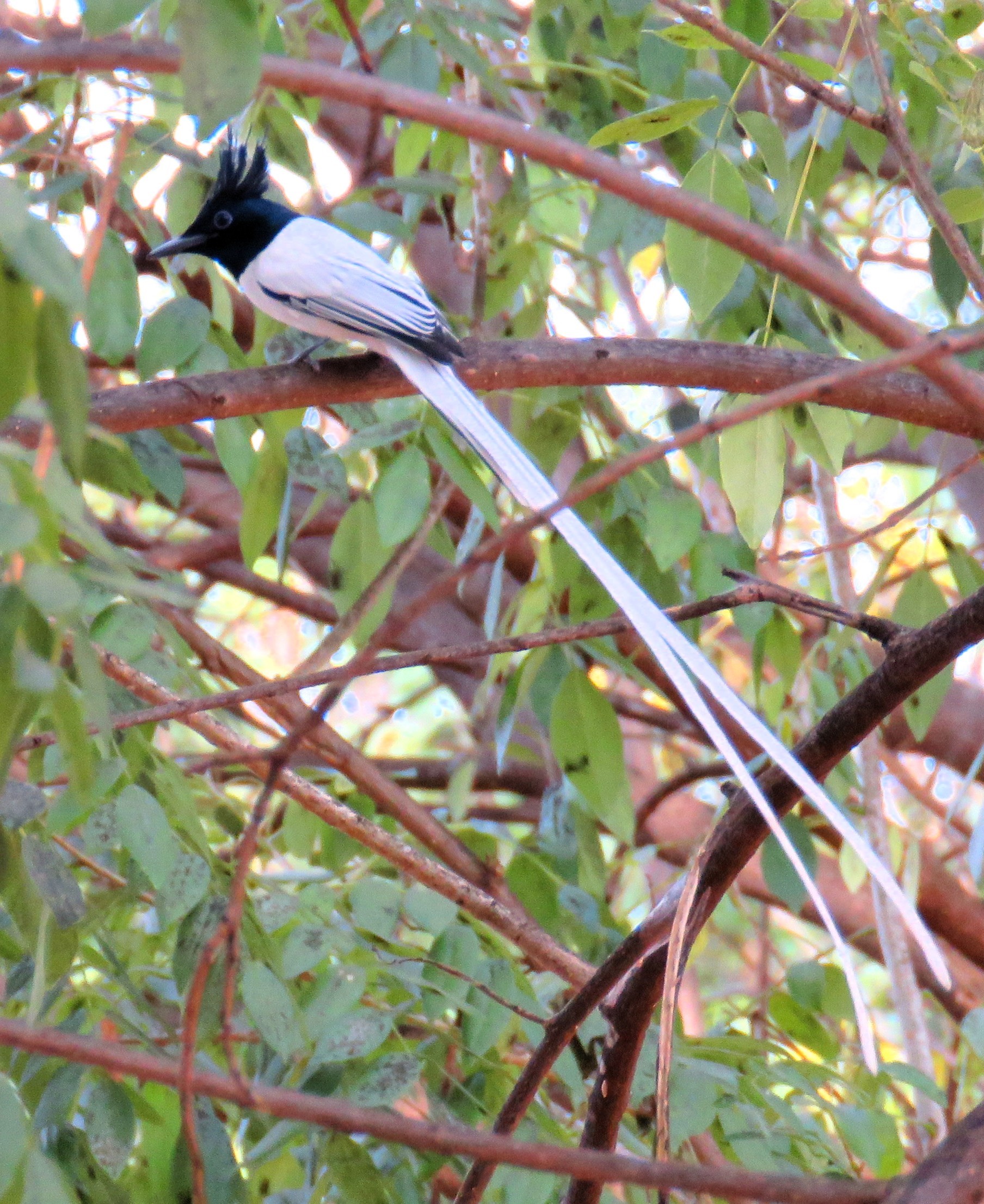Spotting a Paradise Flycatcher in Rishi Valley between the months of November and March is not a tough task. There are certain spots on campus where you could see the lovely male birds showing off their trim white and black plumage with a long pair of streamers trailing behind them as they dart around after their prey. Some males occur with a variant plumage* – upper parts being rufous (the colour of the female) instead of white but with long tail feathers.
This year, I was fortunate in having two male birds haunting the tiny patch of greenery we have below our flight of steps and on the Tamarind tree in front of our house. One of them is the male in rufous morph but with white wings (primaries). He initially appeared in our neighbourhood in the mornings and late afternoons, perched on low branches, unmindful of the presence of people passing by or those sitting under the tree. Around noon he was replaced by an gorgeous white male with a pair of tail streamers, easily over 18 inches in length. He seemed a little more shy than his rufous counterpart. He would streak past like a comet when disturbed. Soon he took over the territory in the evenings too. Often he would be seen catching insects on the wing, flying low over the ground, much to the discomfiture of the resident White-browed wagtails that foraged on the ground. The Wagtails would then chase away the flycatcher which would retreat to another part of the tree.
I have never seen the two males together. The male in the rufous morph moves over to the backyard of the Green House in the evenings. But I have once seen a female when the white male was around and he apparently had no objections to her presence in his territory.
*Earlier it was presumed that the males with rufous colouration were juvenile males. But now it is established that males in rufous plumage too are capable of breeding and so are accepted as a colour morph.
Dr Santharam



